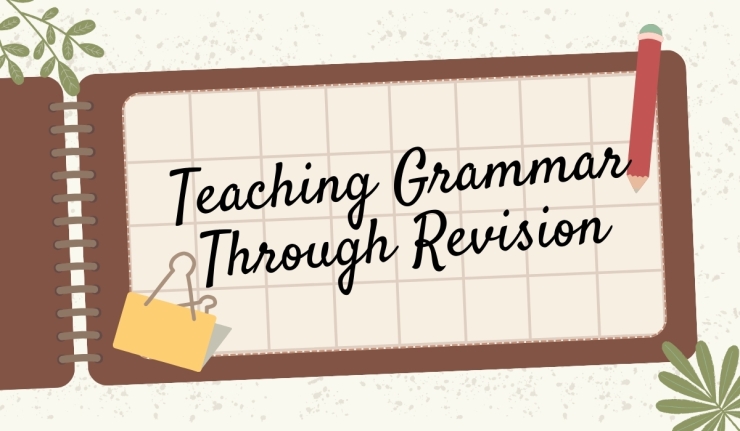
If you’re looking for a better, faster, and more engaging way to teach writing, revision, and grammar skills all at once, then you need to pick up the book, Revision Decisions by Jeff Anderson & Deborah Dean.
You guys, this book is pure gold. I’m serious. If you teach ELA for grades 3-12, you NEED this book. It will make your life and lessons so much easier.
Keep reading to hear how I used this text to teach my grammar skills through the art of revision to my fourth and fifth graders last week.
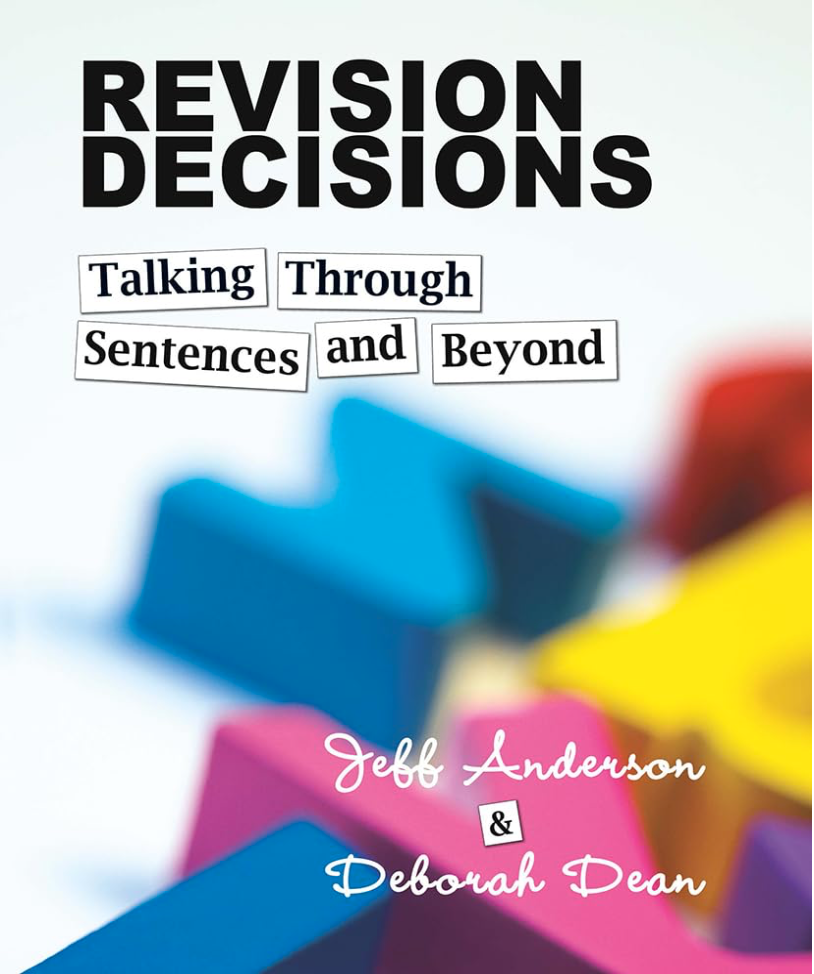
About the Book
The premise of the book is pretty easy to understand. We know that great writing doesn’t happen on the first draft. Before a book becomes a published book, it goes through countless rounds of revisions and edits.
But kids don’t understand that concept. Getting a student to revise their writing – beyond just making the handwriting neater – is nearly impossible because, “once they commit, they commit.” (Revision Decisions, pg. 4)
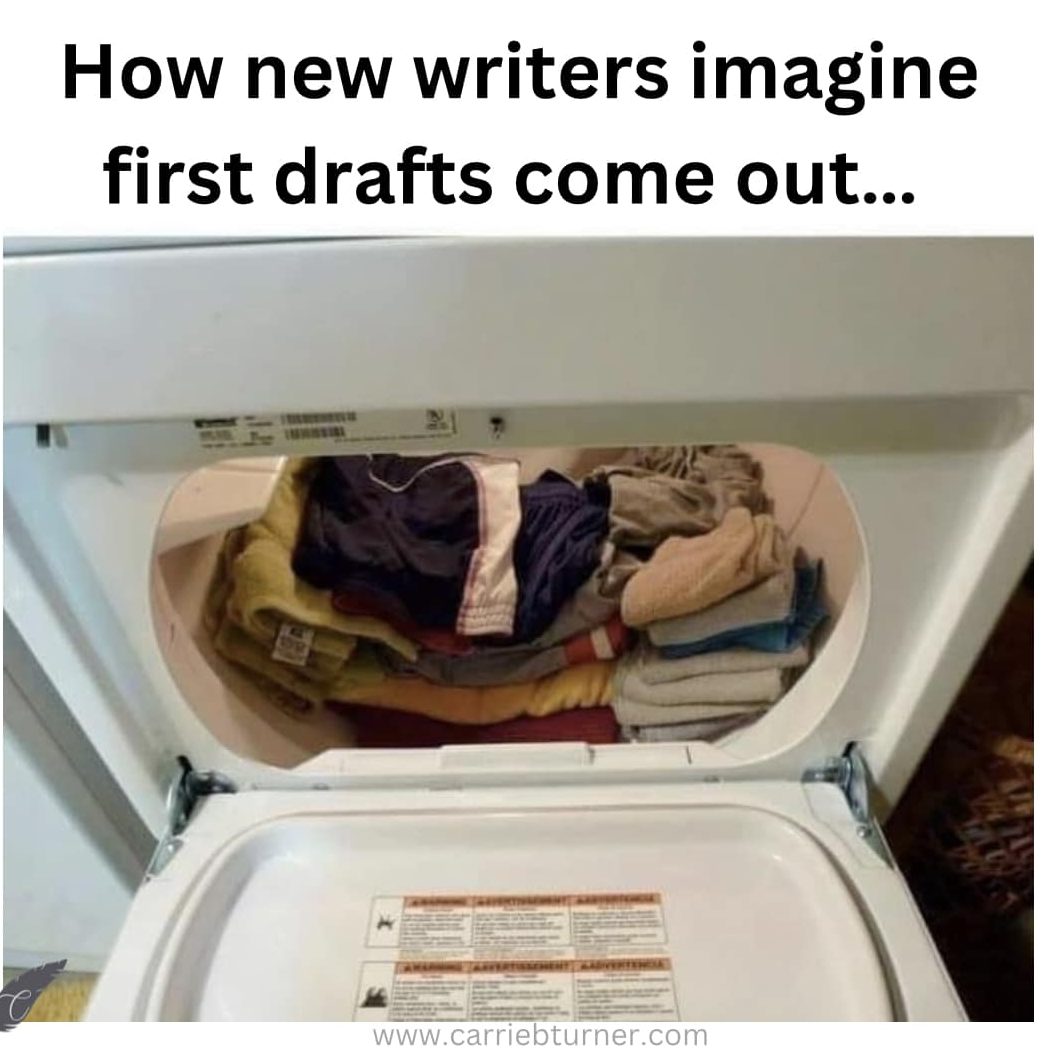
Knowing that, Anderson and Dean use sentence combining alongside the mnemonic DRAFT (which is way better than CUPS or ARMS in my opinion) to get kids playing with and talking about ideas in order to make active revision decisions.

PLANNING MY LESSON
Here’s how it played out in my own 4/5 combo classroom.
Two days ago my principal sent an email to our staff to remind us that the superintendent and school board members would be visiting our school. Mind you, this was happening on a minimum day during Parent-Teacher Conference Week and my writing intervention class had been canceled. Our entire daily routine had been upended and now this?
Let’s just say, I was less than prepared and precious time was ticking by. So I grabbed this picture book (which fit in with my current ELA theme and would directly tie into our upcoming Wax Museum project) . . .
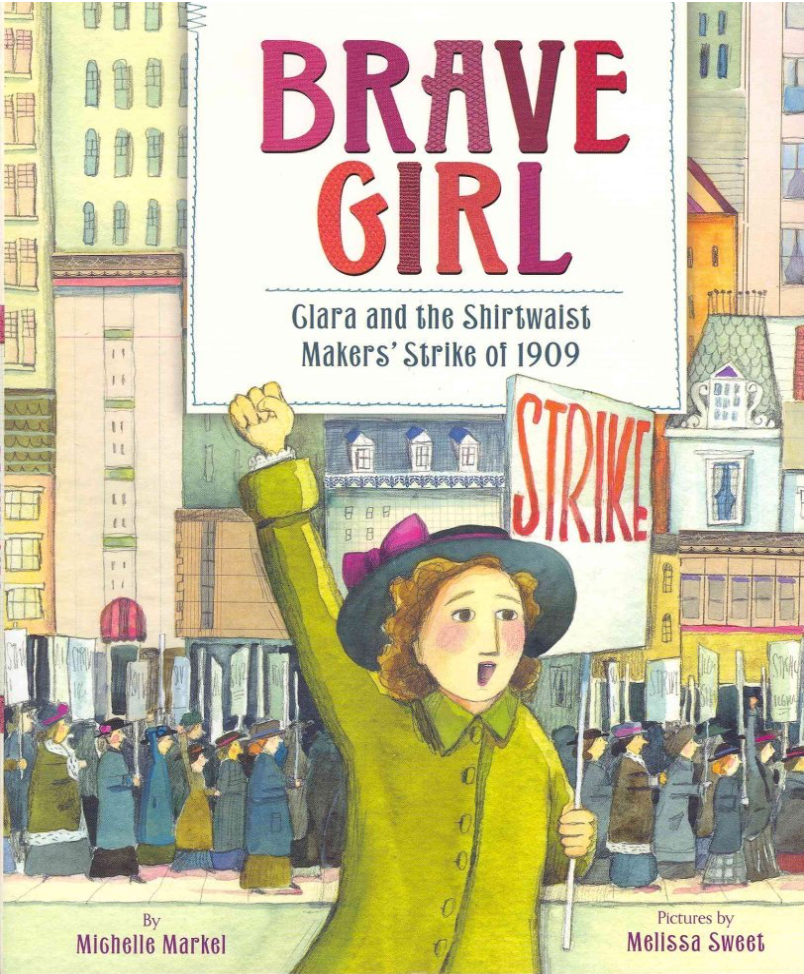
. . . and got to work. I flipped through the pages until I found a juicy sentence with lots of commas, then decomposed the sentence down to its essential parts, creating several short sentences in the process. I did this for three different sentences that all used a similar grammatical structure and added them as individual slides in my daily slide deck.

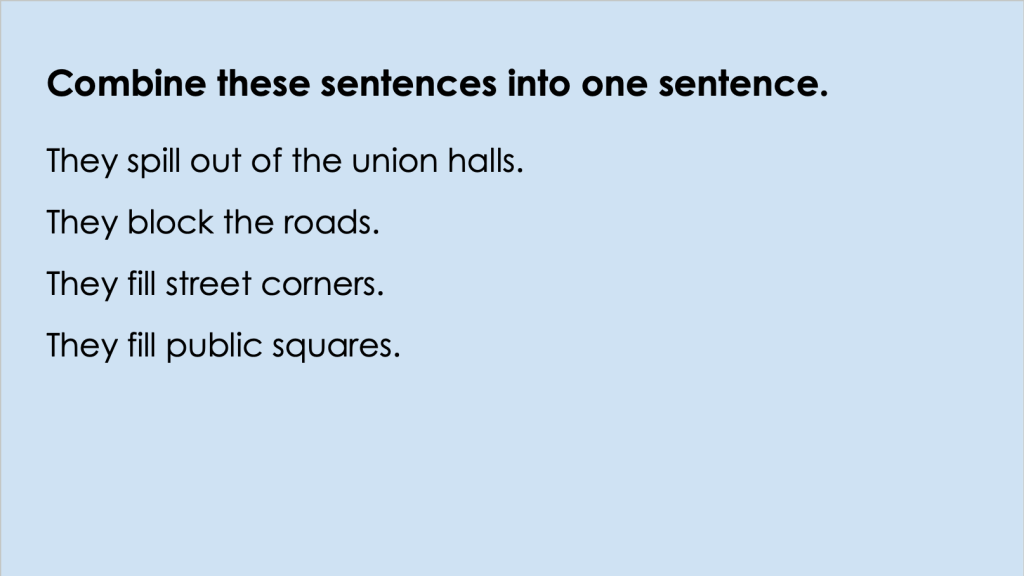
LEARNING WITH STUDENTS
When class began, I showed my students the small sentence chunks in the example above and asked them what we could delete right away, directing their attention to the DRAFT poster I’d quickly made.
The kids first talked it out with their partners (which is the T in the DRAFT mnemonic), then with me. I used the annotate feature on my interactive Promethean board to cross words off until we had only the crucial information left. Then we played with the words until we had combined all the bits into a single sentence:
They spill out of the union halls, block the roads, and fill street corners and public squares.
We kept playing until we had a slightly different version. Then I asked the kids which version they liked best before showing them the author’s original version. The goal in doing this isn’t to show them the “right” way, but rather to introduce them to different choices author’s make.
That’s all grammar really is: a choice. And I want my students to have a lot of different grammatical structures in their writer’s toolbox that they can choose from when writing. In order to do that, we need to analyze and discuss grammar in action. We need to “try on” those structures and think about the effect each structure has on the reader.
So we compared the author’s sentence with ours. My student had never considered adding the -ing to the end of the verbs, which led us to the F of DRAFT: form new verb endings.
By this point in time we had used every part of DRAFT to combine four short sentences into one rich sentence. The kids were starting to get the hang of it and were eager to try more. It was time for the kids to try this process in teams. I presented the next chunk of short sentences and the kids got to work.
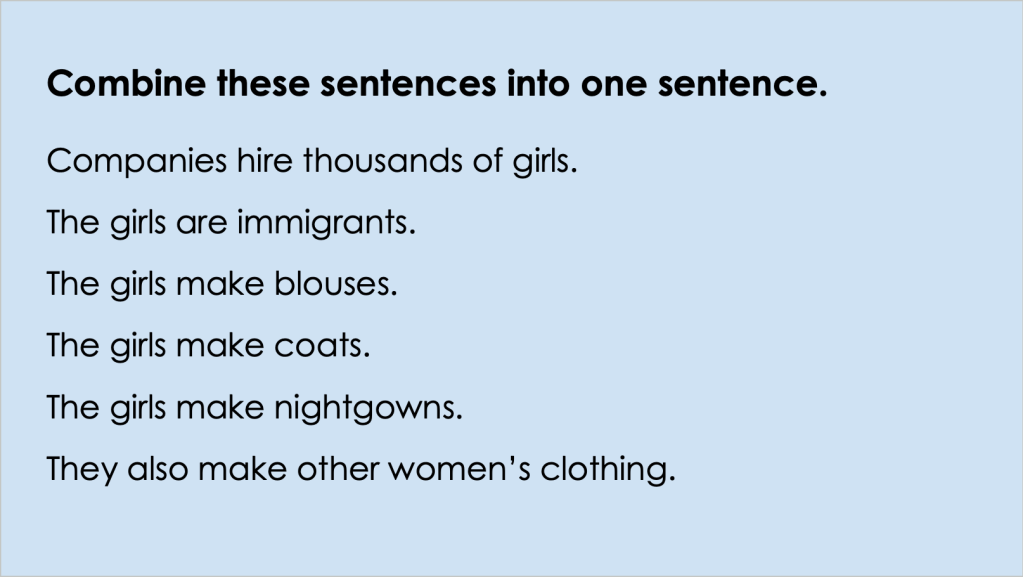
When every team had combined the sentences at least 2 or more ways, they returned to the carpet for our discussion. Each team had the opportunity to present their favorite revised sentence to the class. Immediately I realized that while the kids had completed the task, some teams still didn’t quite understand what a complete sentence looked like or sounded like.
Suddenly we found ourselves having a rich conversation about sentences and conjunctions and punctuation and parts of speech. As students presented, we analyzed each version, again not for right or wrong but for effectiveness. While we discussed, kids tinkered with their sentences, implementing what they’d learned about grammar. And everyone had used commas in a series, which was my intended goal.
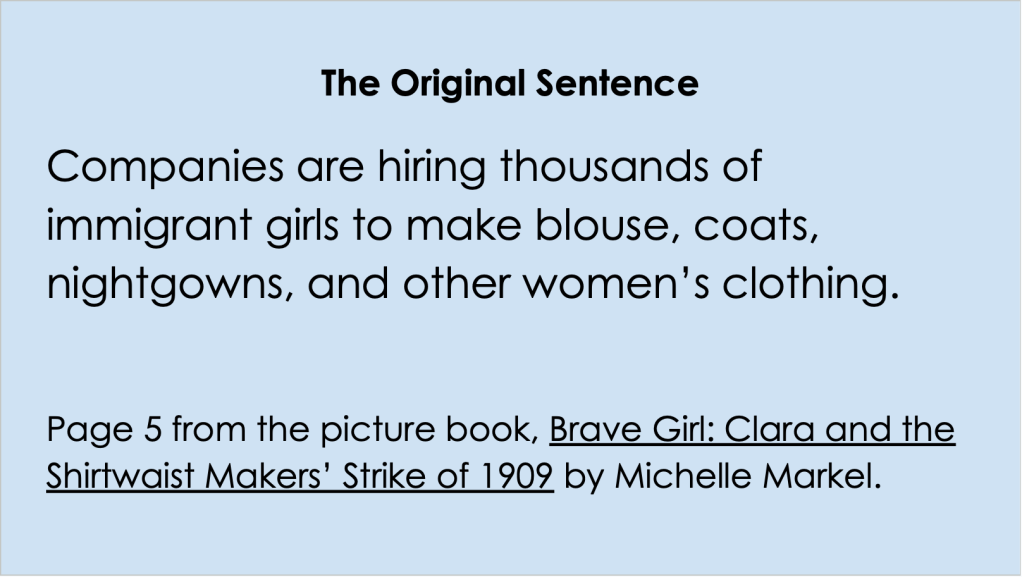
I found this particular set of short sentences interesting because none of my students had combined the first two chunks. They didn’t realize they could just insert the word “immigrants” before the word “girls”. As soon as they saw the author’s version, I could see the lightbulbs switching on. This sentence also gave me a chance to teach kids about compound sentences and how to know when to use a comma before the conjunction and when not to.
It was time to try combining a new set of sentences independently before revising a writing piece of their own.
For nearly an hour my young students were on fire. Every single kiddo was engaged and talking about grammar and revision. I completed the lesson by finally reading the entire picture book to the class. As I read each of the sentences the kids had analyzed, a ripple of excitement went through the group.
Final Thoughts
In the end, the superintendent and school board members never did come in, which is their loss. They missed out on a brilliant hour of close reading, writing, revising, and analyzing of grammar. We’d communicated and collaborated, thinking both critically and creatively. We’d accomplished more in that one lesson than ever before, and I can’t wait for our next sentence combining lesson.
Freebie For You
Want a freebie? Click here to download DRAFT bookmarks. This document is for personal use only and may not be sold or shared online.
More Resources
If you’re looking for more resources on grammar or revision, you might like these resources from my TpT shop:

